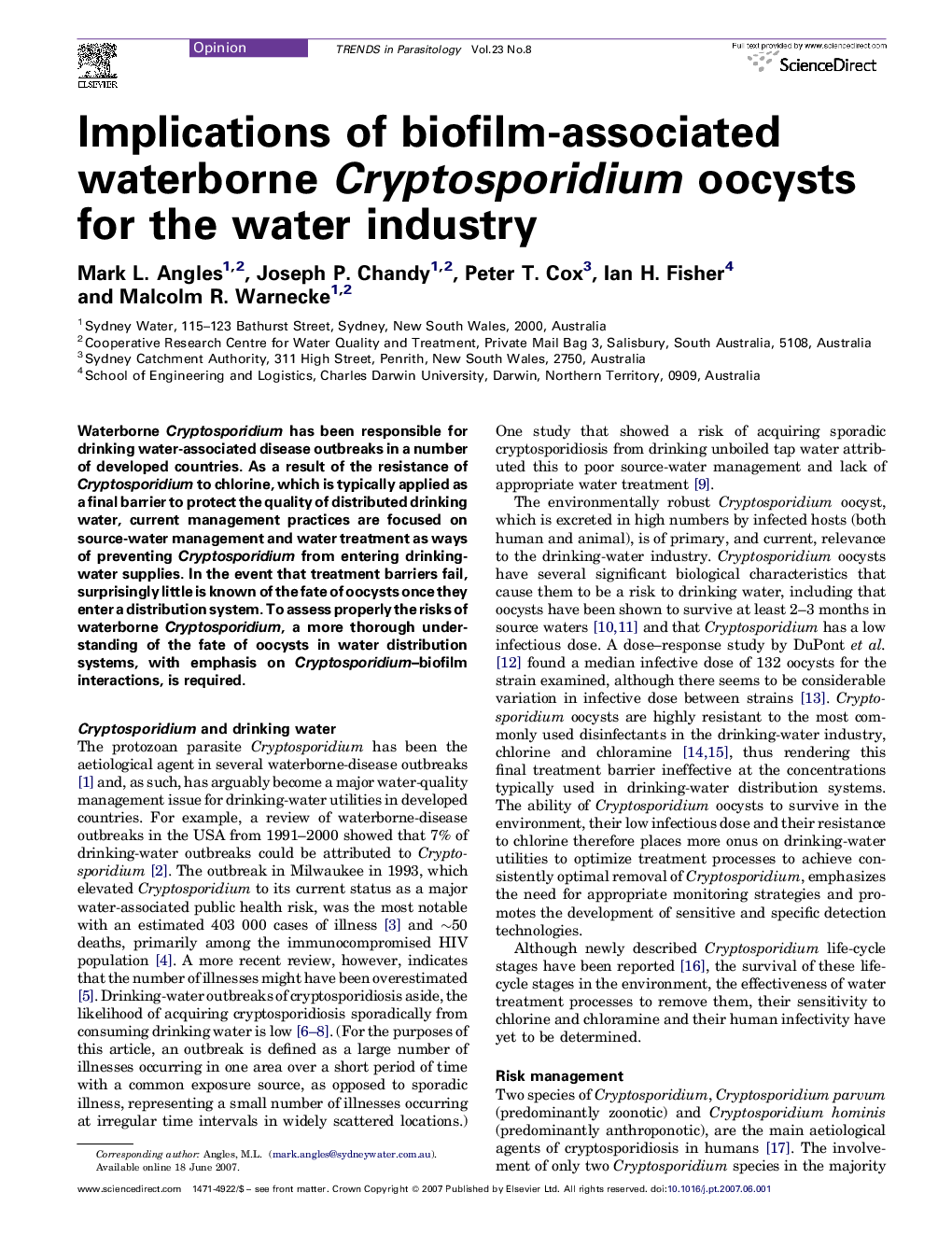| کد مقاله | کد نشریه | سال انتشار | مقاله انگلیسی | نسخه تمام متن |
|---|---|---|---|---|
| 3423501 | 1227036 | 2007 | 5 صفحه PDF | دانلود رایگان |

Waterborne Cryptosporidium has been responsible for drinking water-associated disease outbreaks in a number of developed countries. As a result of the resistance of Cryptosporidium to chlorine, which is typically applied as a final barrier to protect the quality of distributed drinking water, current management practices are focused on source-water management and water treatment as ways of preventing Cryptosporidium from entering drinking-water supplies. In the event that treatment barriers fail, surprisingly little is known of the fate of oocysts once they enter a distribution system. To assess properly the risks of waterborne Cryptosporidium, a more thorough understanding of the fate of oocysts in water distribution systems, with emphasis on Cryptosporidium–biofilm interactions, is required.
Journal: - Volume 23, Issue 8, August 2007, Pages 352–356